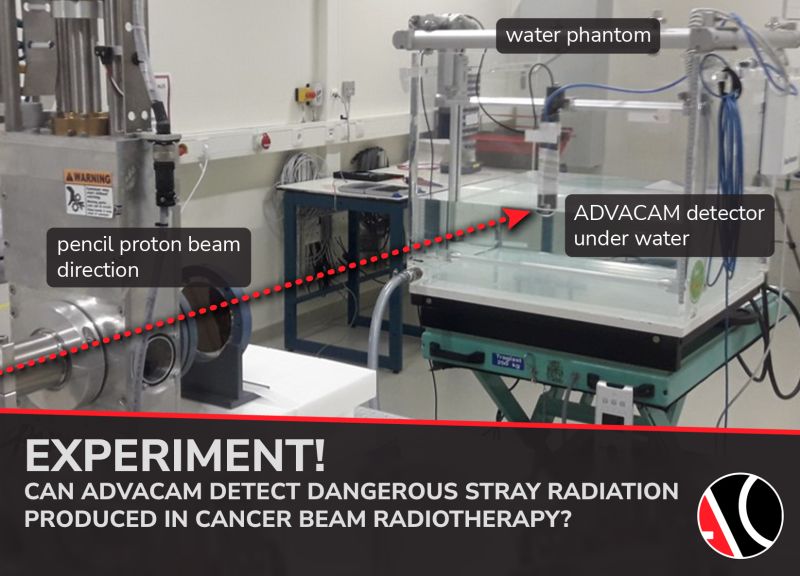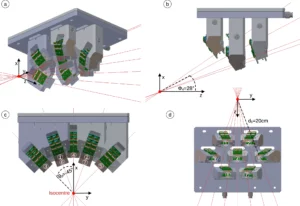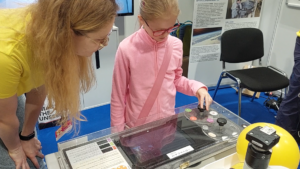EXPERIMENT: Can ADVACAM detect dangerous stray radiation produced in cancer beam radiotherapy?
The human body is mostly composed by water… That is why scientists from ADVACAM Cameras used a box of water (so-called “water phantom”) to substitute real blood. They have irradiated the “water tumor” by proton beams at ultra-high dose rates.
Why? They were trying to investigate how the tissues would interact with extremely short and extremely intense heavy charged particle beams. Such may be used in future advanced methods of cancer radiotherapy called “FLASH”.
The goal of our scientists was to verify whether Advacam’s customized single particle counting detector MiniPIX Timepix 3 could be utilized to monitor some potentially harmful side effects of such novel medical methods. Especially the scattered radiation that could be dangerous to the healthy tissues around the cancer tumor.
So was Advacam’s detector able to handle the job?
Short answer: YES
The complex answer was recently published in Physica Medica journal by Cristina Oancea, Ph.D. , Carlos Granja, Lukas Marek, Jan Jakubek, Jaroslav Šolc, Elisabeth Bodenstein, Sebastian Gantz, Jörg Pawelke, Jiri Pivec
A comprehensive talk was presented by our scientist Cristina Oancea, Ph.D., PhD., at the final meeting of the UDHpulseProject organized by the ELI Beamlines Facility in Prague.
The research was conducted within the UHDpuse project in cooperation with partners from the Tagg University Proton therapy center in Dresden, OncoRay and the INSPIREproject.



